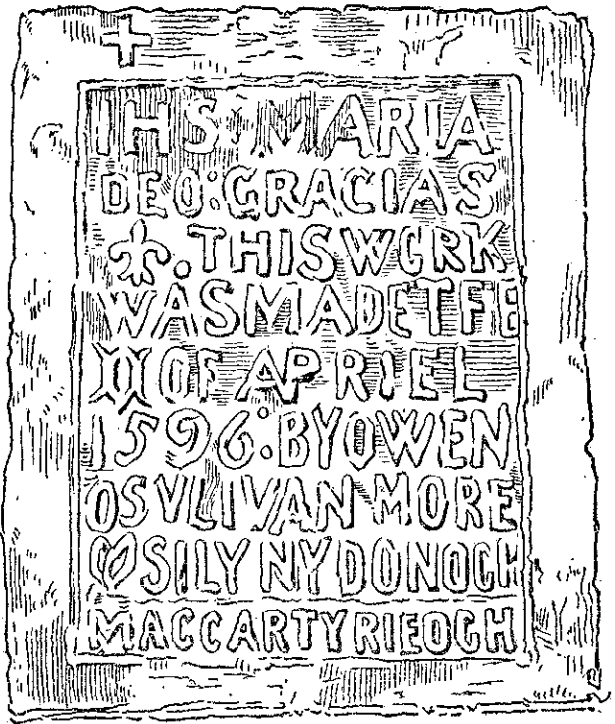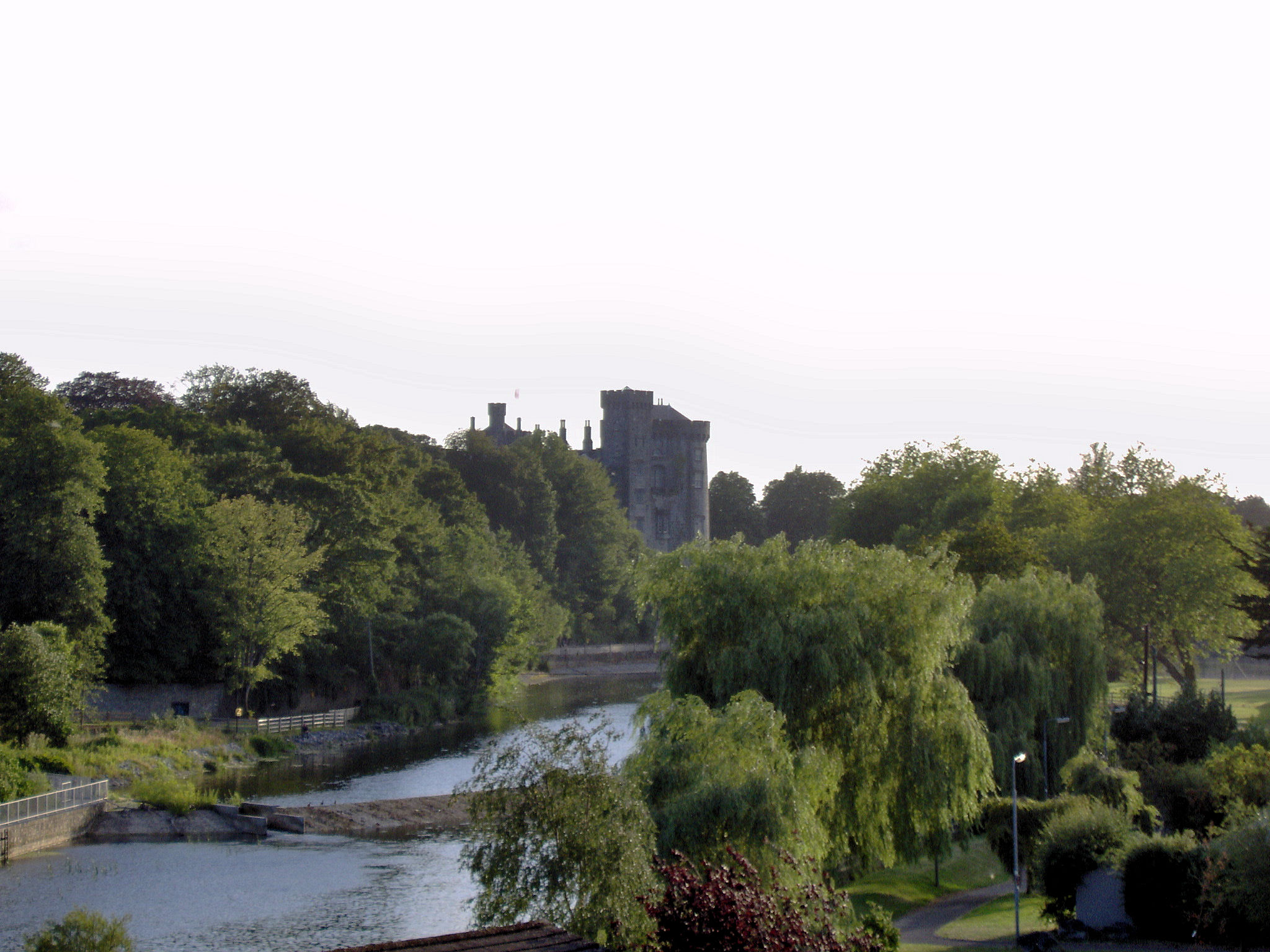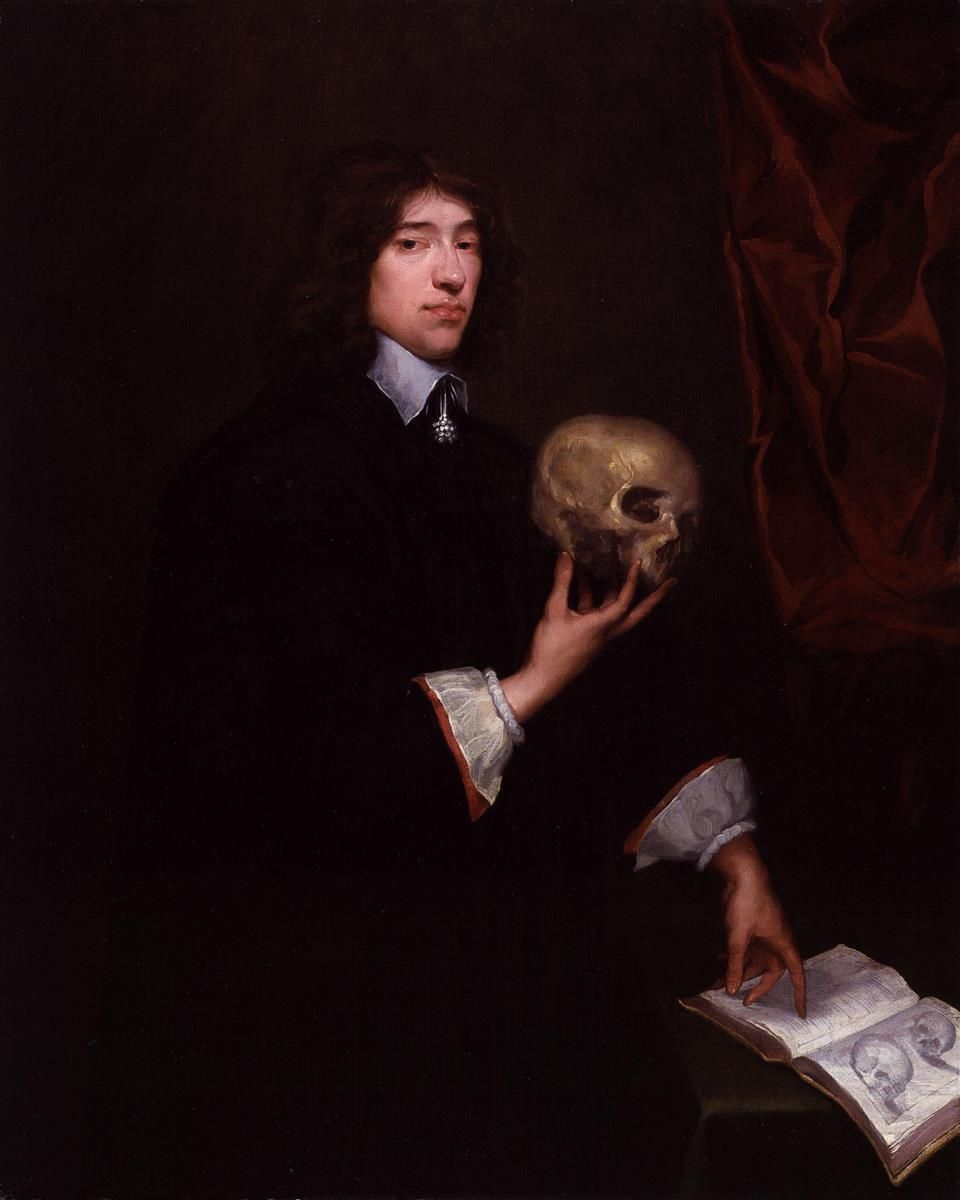|
Dunkerron Castle
Dunkerron Castle () is a ruined four-storey tower house located in Templenoe, near Kenmare, County Kerry, in south-west Ireland. The castle was the family seat of the O'Sullivan Mór family from the late 16th century. History The four-storey tower house was built in the 13th century on a limestone outcrop as a Norman ( Carew) stronghold. Several later structures of the castle, including an enclosed court, date to the late 16th century, when Owen O'Sullivan became 'Chief of the Name' and acceded to the title of 'O'Sullivan Mór'. An inscribed plaque, dated 1596, recorded the castle's association with the O'Sullivan Mór and MacCarthy Reagh dynasties. The castle was the family seat of the O'Sullivan Mór for some time. The main O'Sullivan Mór familial seat moved to nearby Cappanacush Castle during the 17th century, and antiquary Samuel Lewis noted that both castles were "traditionally said to have been defended" by their O'Sullivan Mór owners during the mid-17th century Cromw ... [...More Info...] [...Related Items...] OR: [Wikipedia] [Google] [Baidu] |
Templenoe
Templenoe () is a civil parish in County Kerry, Ireland. It is situated four miles from Kenmare, on the N70 road to Sneem, which forms part of the Ring of Kerry. Templenoe is the location of the Ring of Kerry golf club. There is a Gaelic Athletic Association ground, a pier, and a Catholic chapel of ease for the Kenmare parish. Dromore Castle, Dunkerron Castle and Dromquinna House are located in the area. Templenoe GAA is the local Gaelic Athletic Association club. The Gaelic football playing brothers of the County Kerry team, Pat Spillane, Mick Spillane and Tom Spillane, were each born in Templenoe. In the HBO TV series ''Boardwalk Empire ''Boardwalk Empire'' is an American period crime drama television series created by Terence Winter and broadcast on the premium cable channel HBO. The series is set chiefly in Atlantic City, New Jersey, during the Prohibition era of the 1920s ...'', Templenoe is the birthplace of fictional character Margaret Schroeder née Rohan ... [...More Info...] [...Related Items...] OR: [Wikipedia] [Google] [Baidu] |
Cromwellian Conquest Of Ireland
The Cromwellian conquest of Ireland or Cromwellian war in Ireland (1649–1653) was the re-conquest of Ireland by the forces of the English Parliament, led by Oliver Cromwell, during the Wars of the Three Kingdoms. Cromwell invaded Ireland with the New Model Army on behalf of England's Rump Parliament in August 1649. Following the Irish Rebellion of 1641, most of Ireland came under the control of the Irish Catholic Confederation. In early 1649, the Confederates allied with the English Royalists, who had been defeated by the Parliamentarians in the English Civil War. By May 1652, Cromwell's Parliamentarian army had defeated the Confederate and Royalist coalition in Ireland and occupied the country, ending the Irish Confederate Wars (or Eleven Years' War). However, guerrilla warfare continued for a further year. Cromwell passed a series of Penal Laws against Roman Catholics (the vast majority of the population) and confiscated large amounts of their land. As punishment ... [...More Info...] [...Related Items...] OR: [Wikipedia] [Google] [Baidu] |
Irish Nobility
The Irish nobility could be described as including persons who do, or historically did, fall into one or more of the following categories of nobility: * Gaelic nobility of Ireland descendants in the male line of at least one historical grade of king (Rí). * Hiberno-Norman or Old English (Ireland) nobility, descendants of the settlers who came to Ireland from Wales, Normandy and England after the Norman invasions of England and Ireland in 1066 and 1169–71, respectively. * Peerage of Ireland, whose titles were created by the English and later British monarchs of Ireland in their capacity as Lord or King of Ireland. * Peerage of the United Kingdom, whose titles were created between 1801 and 1922. These groups are not mutually exclusive. There is some overlap between the first two groups (prior to the Treaty of Limerick), and a lesser degree of overlap between the last two groups (prior to the declaration of the Republic of Ireland). Such overlaps may be personal (e.g. a Gaelic ... [...More Info...] [...Related Items...] OR: [Wikipedia] [Google] [Baidu] |
High Sheriff Of Kerry
The High Sheriff of Kerry was the British Crown's judicial representative in County Kerry, Ireland from the 16th century until 1922, when the office was abolished in the new Free State and replaced by the office of Kerry County Sheriff. The sheriff had judicial, electoral, ceremonial and administrative functions and executed High Court Writs. In 1908, an Order in Council made the Lord-Lieutenant the Sovereign's prime representative in a county and reduced the High Sheriff's precedence. However, the sheriff retained his responsibilities for the preservation of law and order in the county. The usual procedure for appointing the sheriff from 1660 onwards was that three persons were nominated at the beginning of each year from the county and the Lord Lieutenant then appointed his choice as High Sheriff for the remainder of the year. Often the other nominees were appointed as under-sheriffs. Sometimes a sheriff did not fulfil his entire term through death or other event and another sheri ... [...More Info...] [...Related Items...] OR: [Wikipedia] [Google] [Baidu] |
John Petty, 1st Earl Of Shelburne
John Petty Fitzmaurice, 1st Earl of Shelburne PC (Ire) (1706 – 14 May 1761), known as John FitzMaurice until 1751 and as The Viscount FitzMaurice between 1751 and 1753, was an Anglo-Irish peer and politician. He was the father of William Petty FitzMaurice, Prime Minister of Great Britain from 1782 to 1783. Life Born John FitzMaurice, Lord Shelburne was the second son of Thomas FitzMaurice, 1st Earl of Kerry, and Anne, daughter of Sir William Petty (1623–1687). He was the younger brother of William FitzMaurice, 2nd Earl of Kerry, and the nephew of Charles Petty, 1st Baron Shelburne and Henry Petty, 1st Earl of Shelburne. He was educated at Westminster School and was called to the Bar, Middle Temple, in 1727. In 1751 he succeeded to the estates of his uncle the Earl of Shelburne (who had died childless) and assumed by Act of Parliament the surname of Petty in lieu of his patronymic. Later the same year he was raised to the Peerage of Ireland as Baron Dunkeron and Vi ... [...More Info...] [...Related Items...] OR: [Wikipedia] [Google] [Baidu] |
Baron Dunkeron
Baron is a rank of nobility or title of honour, often hereditary, in various European countries, either current or historical. The female equivalent is baroness. Typically, the title denotes an aristocrat who ranks higher than a lord or knight, but lower than a viscount or count. Often, barons hold their fief – their lands and income – directly from the monarch. Barons are less often the vassals of other nobles. In many kingdoms, they were entitled to wear a smaller form of a crown called a ''coronet''. The term originates from the Latin term , via Old French. The use of the title ''baron'' came to England via the Norman Conquest of 1066, then the Normans brought the title to Scotland and Italy. It later spread to Scandinavia and Slavic lands. Etymology The word '' baron'' comes from the Old French , from a Late Latin "man; servant, soldier, mercenary" (so used in Salic law; Alemannic law has in the same sense). The scholar Isidore of Seville in the 7th century t ... [...More Info...] [...Related Items...] OR: [Wikipedia] [Google] [Baidu] |
Peerage Of Ireland
The Peerage of Ireland consists of those titles of nobility created by the English monarchs in their capacity as Lord or King of Ireland, or later by monarchs of the United Kingdom of Great Britain and Ireland. It is one of the five divisions of Peerages in the United Kingdom. The creation of such titles came to an end in the 19th century. The ranks of the Irish peerage are duke, marquess, earl, viscount and baron. As of 2016, there were 135 titles in the Peerage of Ireland extant: two dukedoms, ten marquessates, 43 earldoms, 28 viscountcies, and 52 baronies. The Crown of the United Kingdom of Great Britain and Northern Ireland continues to exercise jurisdiction over the Peerage of Ireland, including those peers whose titles derive from places located in what is now the Republic of Ireland. Article 40.2 of the Constitution of Ireland forbids the state conferring titles of nobility and an Irish citizen may not accept titles of nobility or honour except with the prior ap ... [...More Info...] [...Related Items...] OR: [Wikipedia] [Google] [Baidu] |
Restoration (Ireland)
The Restoration of the monarchy began in 1660. The Commonwealth of England, Scotland and Ireland (1649–60) resulted from the Wars of the Three Kingdoms but collapsed in 1659. Politicians such as General Monck tried to ensure a peaceful transition of government from the "Commonwealth" republic back to monarchy. From 1 May 1660 the English, Scottish and Irish monarchies were all restored under King Charles II. The term ''Restoration'' may apply both to the actual event by which the monarchy was restored, and to the period immediately before and after the event. End of the republic With the collapse of The Protectorate in England during May 1659 the republic which had been forced upon Ireland by Oliver Cromwell quickly began to unravel. Royalists planned an uprising in Ireland and sought to turn Henry Cromwell and Lord Broghill (who was in contact with the King's court in the summer of 1659) towards the cause but the plan came to naught. Henry Cromwell left Ireland in ... [...More Info...] [...Related Items...] OR: [Wikipedia] [Google] [Baidu] |
William Petty
Sir William Petty FRS (26 May 1623 – 16 December 1687) was an English economist, physician, scientist and philosopher. He first became prominent serving Oliver Cromwell and the Commonwealth in Ireland. He developed efficient methods to survey the land that was to be confiscated and given to Cromwell's soldiers. He also remained a significant figure under King Charles II and King James II, as did many others who had served Cromwell. Petty was also a scientist, inventor, and merchant, a charter member of the Royal Society, and briefly a Member of the Parliament of England. However, he is best remembered for his theories on economics and his methods of ''political arithmetic''. He is attributed with originating the laissez-faire economic philosophy. He was knighted in 1661. He was the great-grandfather of the 1st Marquess of Lansdowne (better known to history as the 2nd Earl of Shelburne), who served as Prime Minister of Great Britain, 1782–1783. Life Early life Pett ... [...More Info...] [...Related Items...] OR: [Wikipedia] [Google] [Baidu] |
Act For The Settlement Of Ireland 1652
The Act for the Setling of Ireland imposed penalties including death and land confiscation against Irish civilians and combatants after the Irish Rebellion of 1641 and subsequent unrest. British historian John Morrill wrote that the Act and associated forced movements represented "perhaps the greatest exercise in ethnic cleansing in early modern Europe." Background The Act was passed on 12 August 1652 by the Rump Parliament of England, which had taken power after the Second English Civil War and had agreed to the Cromwellian conquest of Ireland. The conquest was deemed necessary as Royalist supporters of Charles II of England had allied themselves with the Confederation of Kilkenny (the confederation formed by Irish Catholics during the Irish Confederate Wars) and so were a threat to the newly formed English Commonwealth. The Rump Parliament had a large independent Dissenter membership who strongly empathised with the plight of the settlers of the Ulster Plantation, who had s ... [...More Info...] [...Related Items...] OR: [Wikipedia] [Google] [Baidu] |
Samuel Lewis (publisher)
Samuel Lewis (c. 1782 – 1865) was the editor and publisher of topographical dictionaries and maps of the United Kingdom of Great Britain and Ireland. The aim of the texts was to give in 'a condensed form', a faithful and impartial description of each place. The firm of Samuel Lewis and Co. was based in London. Samuel Lewis the elder died in 1865. His son of the same name predeceased him in 1862. ''A Topographical Dictionary of England'' This work contains every fact of importance tending to illustrate the local history of England. Arranged alphabetically by place (village, parish, town, etc.), it provides a faithful description of all English localities as they existed at the time of first publication (1831), showing exactly where a particular civil parish was located in relation to the nearest town or towns, the barony, county, and province in which it was situated, its principal landowners, the diocese in which it was situated, and—of novel importance—the Roman Cathol ... [...More Info...] [...Related Items...] OR: [Wikipedia] [Google] [Baidu] |

_(geograph_3037291).jpg)



